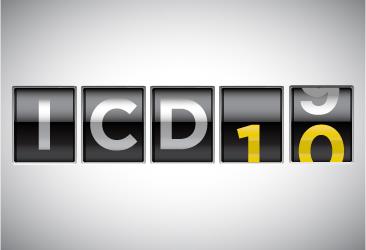The Oct. 1 compliance deadline for ICD-10 implementation is just days away, and many physician practices may be relying on the aid of coding tools to help ease the transition from the ICD-9 code set. The question is: Can you depend on these tools to provide the accurate codes?
Coding tools that help map diagnosis codes from one code set to the other can be helpful as you navigate the complexities of ICD-10. But experts caution that you should verify the accuracy of these tools and make sure the code best represents the patient’s diagnosis.
Room for interpretation
Many electronic health record systems and other coding assistant programs can help map ICD-9 codes to ICD-10 codes. But the problem is that because ICD-10 has more details, more codes and different concepts, not every ICD-9 code matches easily to an ICD-10 code.
Examples of coding errors that may not be the most appropriate for the patient’s diagnosis:
- A patient has been seen for many years for atrial fibrillation. The coding tool maps the ICD-9 code for atrial fibrillation (427.31) to ICD-10 code I48.91 for unspecified atrial fibrillation. But one of the other ICD-10 codes for paroxysmal, persistent or chronic atrial fibrillation may have been more accurate.
- A patient underwent removal of a benign neoplasm of the colon. The coding tool identified ICD-10 code D12.6 for benign neoplasm of colon, unspecified. But another ICD-10 code that includes the location within the colon may have been more accurate.
These code possibilities would fall within the Centers for Medicare & Medicaid Services’ (CMS) definition of a “family of codes,” so they should not be denied or subject to an audit solely based on the specificity of the diagnosis code as long as they are from the appropriate family of ICD-10 codes. However, this exception applies only to Medicare Part B claims. Claims for commercial health insurers, meanwhile, could be denied or audited for incorrect coding.
What you should do—and final preparations
Experts say that if you’re using coding tools, you should test their accuracy by comparing the output of the program against your documentation. Adding this important manual check will help you verify that you’re using the best coding and get your practice more familiar with the new code set.
Although the clock is ticking down, you still have time to get your practice prepared. Important resources that can help you get ready over the last few days include:
- A free online module in the AMA’s STEPS Forward® collection, which offers materials to help you prepare.
- Additional ICD-10 content at AMA Wire® provides important insights for what you need to know about the new code set, including the last-minute guide for practices.
- The AMA’s ICD-10 Web page offers important information and resources on implementation planning, from cross-walking between ICD-9 and ICD-10 to testing your readiness.
- CMS also is offering free assistance, including its “Road to 10” website aimed specifically at smaller physician practices. This collection includes primers for clinical documentation, clinical scenarios and other specialty-specific resources to help with implementation. Read more about the agency’s resource offerings.




